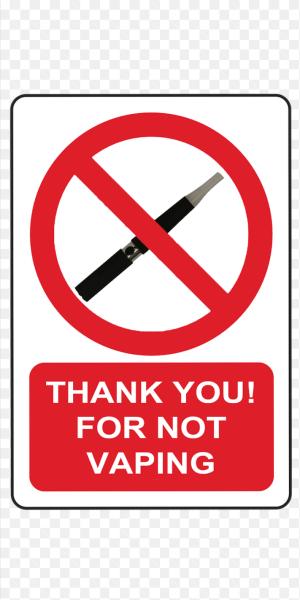For many years, the science communication landscape looked something like this: reputable universities and public health institutions did sound research and educated consumers about the risks they faced; devious activist groups fabricated health scares that gullible and dishonest reporters uncritically amplified; ACSH and other science-minded organizations refuted the nonsense emanating from the headlines. [1]
Things are different today. Often times its reputable healthcare providers and other trusted institutions that mislead consumers. There is no better example than this recent piece published by the Cleveland Clinic: How Vaping or Smoking Impacts Your Physical Activity:
Contrary to some popular beliefs, vaping isn’t a safe alternative to smoking. In fact, researchers say the rise of vaping “threatens five decades of progress in the fight against tobacco use.”
The article is a simmering mixture of equivocation, cherry-picked statistics, and outright lies. There's an eight-letter word for it we won't use to preserve our family-friendly reputation. Let's look at some specifics and hopefully help Cleveland Clinic right its ship.
Research from the Centers for Disease Control and Prevention (CDC) shows the vast majority of vapes sold in the U.S. include nicotine, long known to be a dangerous and addictive chemical.
Absent the carcinogenic chemicals in tobacco smoke; nicotine is just a mild stimulant. The clinic agrees with this observation because it recommends nicotine-containing gum, patches, lozenges, inhalers, and nasal sprays as smoking-cessation tools. Small doses of nicotine can't be “dangerous and addictive” when vaped and “medication” when sold by giant pharmaceutical companies. These are mutually exclusive designations.
Vaping is on the rise, particularly among teenagers and young adults. Studies have shown that vaping among young people has risen from about 1% in 2011 to a whopping 21% in 2018.
The trend completely reverses when you include the most recent results from the CDC's National Youth Tobacco Survey, which go through 2022—four more years of data Cleveland Clinic ignored. Fewer than 10 percent of teenagers vape today, and the vast majority are already smokers. The same is true of young adults; they are smokers who turn to vaping because it helps them quit combustible tobacco. In fact, vaping is more effective than the cessation drugs Cleveland Clinic endorses.
Smoking causes both immediate and long-standing effects on exercise and physical activity … Like inhaling cigarette smoke, vaping can cause coughing and chest pain or tightness. (Not exactly the kind of symptoms that will help you run that extra lap or increase your energy to do a few more reps in the gym.)
I lift weights and run sprints three times a week; I also vape daily, yet my performance in the gym doesn't suffer. I'm not the only one, either. According to a May 2022 study published in Drug and Alcohol Dependence:
Among smokers at age 30, 36% adopted vaping some or all of the time by age 39. Higher relative vaping frequency was related to 4 of 9 outcomes examined, including significantly more exercise, more constructive engagement, [and] better physical health ... at age 39, accounting for prior behaviors at age 30 [emphasis mine].
Follow-up question for the Cleveland Clinic: if vaping hinders exercise performance, why do people engage in more exercise after switching to e-cigarettes? Perhaps the growing pile of studies documenting the benefits of vaping, including improved respiratory health, could help us answer that question.
Nicotine is a dangerous and highly addictive chemical. Quitting vaping and smoking isn’t easy. Many smokers may require multiple techniques to find what works for them, and relapses are common …
The word “techniques” above links to this article on the clinic's website, “How To Quit Smoking: 7 Ways to Kick the Habit.” Here's technique number two:
Try over-the-counter methods like nicotine patches, lozenges or gum. You can also talk to your doctor about prescription nicotine that comes in a nasal spray or inhaler.
So, to give up this “dangerous and highly addictive chemical,” Cleveland Clinic suggests you use the same dangerous and highly addictive chemical. The absurdity here can't be lost on anyone, even the nincompoops who wrote the article.
This isn't to say that nicotine replacement therapy is useless. It works quite well for many ex-smokers, including people who reduce or eliminate their nicotine dependency with e-cigarettes. But it's logically impossible to demonize a substance and simultaneously prescribe it to your patients.
It's not surprising when anti-tobacco groups and reporters attack vaping. Ideologues and idiots routinely get the facts wrong. But when the Cleveland Clinic, which bills itself as “the world’s first integrated international health system,” parrots the Truth Initiative's disingenuous rhetoric, we have a very serious problem.
Public health institutions have done much to discourage smokers from switching to vaping, a decision that quite literally may cost them their lives. Whatever its motivations, Cleveland Clinic is ignoring the evidence and needlessly putting many people in harm's way.
[1] There have always been exceptions to this rule, of course. The decades-long assault on saturated fat is probably the best example of mainstream medicine dispensing dubious health information to the public.




